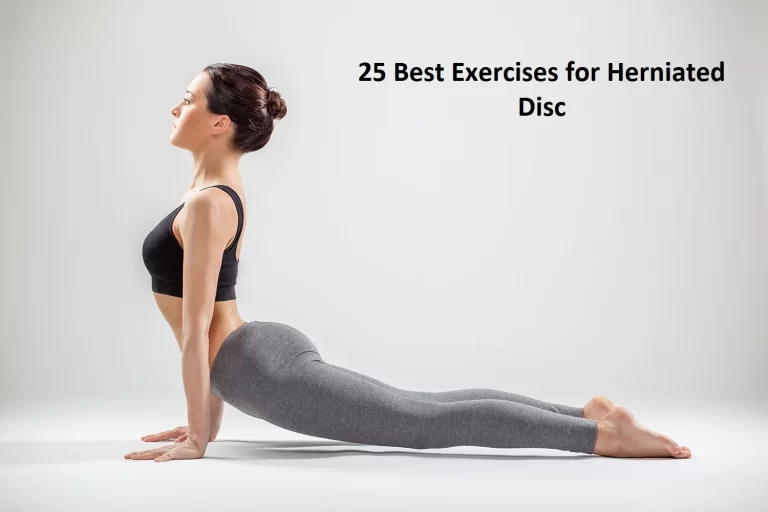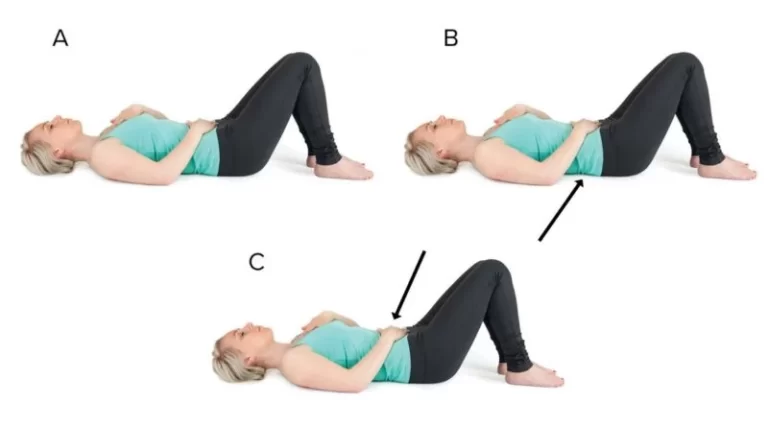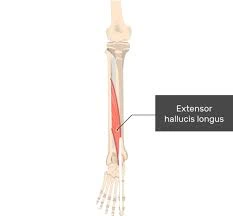Supraspinatus muscle stretch exercise
Supraspinatus stretch is a great exercise to increase the flexibility of the shoulder with other rotator cuff muscles, this stretching exercise has many health benefits as well as decreases the risk of injury while performing day-to-day activity.
Table of Contents
What is supraspinatus stretch?
- A supraspinatus is the upper back muscle that leads to shoulder abduction as well as stabilization. It is also one of the four shoulder muscles that form up a rotator cuff, assisting to raise an arm away from the side of the body.
- The supraspinatus is the small muscle in the scapulae that may be the origin of a lot of pain if not taken care of.
- When the patient works at an office desk every day or they play a shoulder-intensive sport such as tennis, chances are tightened in the supraspinatus muscle, and in need of care.
- Releasing a supraspinatus muscle may decrease shoulder pain that has to grow as a result of tightness.
- A supraspinatus is responsible for abduction, and internal as well as external rotation. This is highly susceptible to injury, particularly while motions that require repetitive overhead motion of the arm, namely swimming or even painting. Poor flexibility in a supraspinatus is the risk factor for impingement syndrome, the overuse injury that results in tenderness, pain, swelling, as well as decreased range of motion.
Anatomy of the supraspinatus muscle
Origin
Supraspinatus fossa of a scapula. The shallow depression in a body of a scapula above its spine.
Insertion
Greater tuberosity of a humerus, as well as a superior facet.
Nerve Supply
Suprascapular Nerve, C5 as well as C6, superior trunk of a brachial plexus.
Blood Supply
Suprascapular Artery.
Action
Supraspinatus muscle abducts the arm from 0 to 15 degrees, when this is the main agonist, then helps the deltoid to produce abduction beyond the range up to 90 degrees.
A supraspinatus is the upper back muscle that helps in shoulder abduction as well as stabilization. This is also one of the four shoulder muscles that make up a rotator cuff, assisting to lift the arm away from the side of the body.
If the supraspinatus lacks flexibility, the patient could be at increased risk for impingement syndrome. Its overuse injury may lead to tenderness, swelling as well as limited range of motion, & shoulder pain.
What are the health benefits of performing supraspinatus stretch?
There are certain benefits you can feel after doing stretch:
- This stabilizes the shoulder as well as upper back muscles
- Improves good blood circulation in that area
- Improve posture
- Reduce neck as well as head pain
- Improve range of motion of the shoulder joint.
- Decrease tightness in shoulder joint
- Increase the shoulder function
- Boost athletic performance
- Prevent shoulder injury
What are the types of supraspinatus stretching?
- Single-side Stretch
- Double Shoulder Stretch
- Seated Stretch
- Pendulum Stretch
- Crossover arm stretch
- Seated Table Slides
- Sit on a stable chair or bench with a firm surface.
Single-side Stretch
How to do: Stand straight with the arms hanging by the side.
Try to grab the left wrist with the right hand behind the back.
Use the left hand to grasp the wrist behind the back, during relaxing the neck as well as tilting the head to a right for added intensity.
Continue holding the wrist behind you & use the right hand to pull the wrist up to the back, keeping the left shoulder relaxed.
Hold it for 30 seconds & repeat 4 times before switching to the other sides.
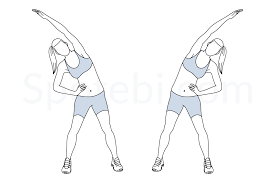
Double Shoulder Stretch
How to do: Standing with the upright spine, stretch the left as well as right shoulders at the same time by placing the hands on the hips.
The palms facing away from the body & the fingers pointing backward.
Press the backs of the hands against the hips & gently move the elbows forward until the patient feels the stretch behind the shoulders.
Hold it 30 seconds before returning the elbows to the embarking position & relaxing.
Repeat 4 times in one session per day. Do three sessions per day.
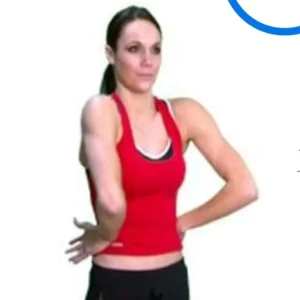
Seated Stretch
How to do: Take a sitting position on a stable chair with a firm surface.
Bend the left elbow at a 90-degree angle, and position the arm in front of the face with the underlying across the lower ribcage.
Send the right upper arm under the left upper arm & reach up with the right hand to grasp the left thumb.
Relax the left arm as well as the shoulder, lightly pulling the left thumb toward the left, while rotating the left arm out.
Hold that stretching position for up to 30 seconds & relax.
Repeat up to four times before switching to the other side.
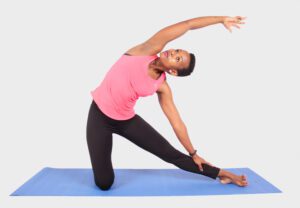
Pendulum Stretch
How to do: First of all, the physical therapist tells the patient to take a standing position next to the table so that it is at the patient’s body side. With the straight back, bend forward at a waist.
Let the right elbow, as well as the forearm, support you on a table.
Let the left arm hang straight down from a shoulder joint, loosely as well as limply.
Slowly move the left arm forward as well as back, so that it swings like a pendulum of the grandfather clock.
Then, change the movement from side to side
Next, go around 3 times or more in one session and do three sessions per day, & switch directions.
Repeat on the right side.

Crossover arm stretch
How to do: The patient can perform this stretch sitting or even standing position. The main thing is you keep the posture upright as well as straight, to target the supraspinatus successfully.
Raise the left arm in front of you to shoulder height, so that it is parallel to the ground.
Cross an extended arm over the chest & use the left arm to hold it in place.
The patient can feel a stretch in the posterior deltoid as well as the supraspinatus, at the back of the shoulder joint.
Hold it up to 30 seconds.
Bend an elbow of the left arm that is stretched across the body, so that the patient feels an isolated stretch in the supraspinatus.
The further you pull the arm in toward the body, the deeper you will feel the stretch.
Repeat the stretches on the right shoulder.

Seated Table Slides
How to do: To begin with, the therapist tells the patient to take a sitting position in the chair at a table with the towel in front of her.
Put the hands on a towel, with the palms facing towards a table. The patient can perform one arm at a time or both arms at the same time.
Flex forward at your waist & push a towel as far as on a table, allowing it to slide along a table as you flex into a deeper stretch.
Once the patient feels a perfect stretch in the shoulders, hold it for 20 – 30 seconds before sliding back up to the embarking position.
Repeat for 4 more repetitions.
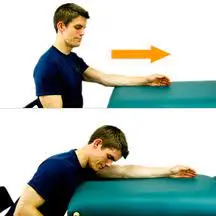
Stand with the arms relaxed at the sides
Attempt to grasp the right wrist with the left hand behind the back. If the patient has difficulty & cannot reach it, toss the towel over the left shoulder & grasp that instead.
Use the right hand to grab the wrist or the towel behind the back, while relaxing the neck & tilting the head to the left for
added intensity.
Continue holding the wrist and a towel behind you from both ends as well as use the left hand to pull the wrist or the towel up the back, keeping the right shoulder relaxed. Hold for 30 seconds & repeat up to four times before switching sides.
Sit on a stable chair or bench with a firm surface
Bend the right elbow at a 90-degree angle, positioning an arm in front of you with an elbow lying across the lower ribcage.
Send the left upper arm under the right upper arm & reach up with the left hand to grab the right thumb.
Relax the right arm & shoulder, lightly pulling the right thumb toward the right, during rotating the right arm out.
Hold for up to 30 seconds, relax briefly & repeat up to four times before switching to the other shoulder.
Common Mistakes
Be sure to breathe deeply as well as evenly while doing the stretch. Focus on inhaling as you reach into the stretch & exhale to deepen the extension. Hold each stretch for a few breaths then relax a hold. Activate a stretch again during resuming deep breathing.
The simple act of deep breathing may enhance the effects of a stretch significantly. S
Additionally, not relaxing the face, neck, as well as shoulder muscles is another common mistake when doing cow face poses. Assist reduce head-neck pain by actively relaxing the facial as well as neck muscles. Remember to embark at the top relax the forehead, cheeks, mouth, chin, neck, & finally, shoulders. This mental exercise will ensure that the patient is not tense throughout the stretch.
What should not you do during supraspinatus stretch?
- There are certain things the patient will not do during stretch:
- Do not stretch too much which causes injury or even damage to other body parts.
- Do not perform extra repetitions, this should be recommended times only.
- If the patient has prior pain or injury, he cannot perform stretching.
- When the patient feels discomfort or even pain during stretching, stop immediately.
- Do not perform so many stretches at a time that makes the muscles fatigue.
Safety and Precautions
If the patient feels any pain, numbness, or even pinching during performing any of these stretches, stop & cut out of the stretch you are doing.
Make sure to breathe deeply as well as evenly while also relaxing the neck, face & shoulder muscles.
FAQ
How does the patient loosen a supraspinatus muscle?
Relax the right arm as well as the shoulder, lightly pulling the right thumb toward the right, during rotating the right arm out. Hold for up to 30 seconds, relax briefly & repeat up to four times before switching to the other shoulder.
Where does the patient feel supraspinatus pain?
Supraspinatus pain is felt at a side of a shoulder in the middle section of a deltoid. In some cases, it may be felt further around the front of the shoulder.
What happens when supraspinatus is tight?
Supraspinatus tendinopathy is usually consistent with anterior instability causing posterior tightness. The problems that patients with Supraspinatus Tendinopathy complain of are pain, inflammation, reduced ROM, strength, as well as functional activity.
Why is supraspinatus most commonly injured?
The supraspinatus tendon is the most commonly injured tendon of the four tendons which lies predominantly in a space between an acromion & the humeral head.
How long does it take for the supraspinatus tendon to heal?
It takes 6 to 8 weeks for a tendon to heal to a bone. Complete recovery time varies by the size of a tear.
Is the supraspinatus tear the same as the rotator cuff tear?
The supraspinatus tear is a tear or even rupture of a tendon of the supraspinatus muscle. A supraspinatus is part of a rotator cuff of the shoulder. Most of the time this is accompanied by another rotator cuff muscle tear.
Will the tear in a supraspinatus heal without surgery?
Rotator cuff tears do not heal on their own without surgery, but several patients may improve functionally & reduce pain with nonsurgical treatment by strengthening the shoulder muscles.


